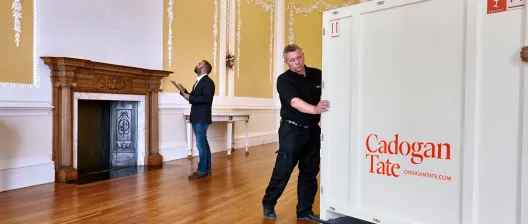The best of the best: Pablo Picasso and Marcel Duchamp
Some arguments can never be resolved, and that isn’t a bad thing at all. Their impossibility is their brilliance, and so it is that certain kinds of material have the power to amplify an average tête-à-tête into an epic, discursive and lingering exchange that all involved remember for a very long time.
When such after dinner conversations turn to modernism, trying to agree on the most influential artist of this avant-garde age is a challenging pursuit, hopeless in every way. Such discussions are therefore anything but harmonious and so it is that raucousness becomes the order of the day, as speakers eloquently make a fitting case for why they are right.
The cast of luminaries is mesmeric: Henri Matisse, Salvador Dali, Joan Miro and Mark Rothko…we could go on. Each, in their own distinct way, were incomprehensibly brilliant, ushering in perfect revolutions, by which we mean a perfect break with the past.
Two other artists belonging to this collective include Pablo Picasso and Marcel Duchamp, both of whom, we can confidently conclude, are admired by all who love, appreciate and understand the beauty of art and its place in the world.
A new exhibition, brilliantly titled Picasso/Duchamp “He Was Wrong”, pairs these two beloved visionaries for the first time, subtly asking us to ponder the magnificence of both men. After much contemplation, we are then pressed to make a decision on who is ultimately, in the lexicon of boxing, the champion of champions. Easy it most certainly is not.
The difficulty lies in the dissimilarity between the individuals. Picasso was more emotional, quixotic, a protean genius, while Duchamp, though no less emotional, was much more of an intellectual, always thinking, keen to shatter the accepted norm. This kept both men at a distance from one another, as if the world wouldn’t allow it. They are reported to have only met once, fleetingly.
It is said that both were indifferent to one another, despite the fact that together they both shaped and influenced modernism in such a way that without either of them, everything that followed, Abstract Expressionism and Pop Art for example, could never have blossomed.
They were on a similar spiritual journey, so much so that they shared similar philosophical leanings, though it was articulated in line with their own truths. To illustrate, Picasso once said that “everything you imagine is real”, while Duchamp argued that “destruction is also creation”. The illogical, they said, can have meaning.
“We are featuring one of the most magnificent and productive rivalries of 20th century art,” commented Daniel Birnbaum, director of Moderna Museet. “The most influential painter is juxtaposed for the first time in this way to the artist who has most poignantly challenged painting itself and insisted on other possibilities. This exhibition will be valuable to anyone who sometimes asks what art is and what it can be.”
The exhibition, at Moderna Museet in Stockholm, brilliantly reveals each man’s distinct way of approaching modernism, the differences explicit, the sentiment and effect ultimately the same. A case in point is two works of art executed within one year of each other, which was also the first and only time they were said to have met.
Picasso’s Bouteille, Verre et Violon (1912), saw the artist manufacture a bottle, a glass and a violin through the use of proto-cubist collage. It is, at first glance, capriciously put together. Meanwhile, Duchamp’s Bicycle Wheel (1913), the original readymade, sees a bicycle wheel still attached to its fork fixed to a white stool. Again, it comes across as an arbitrarily conceived idea.
However, both works are significant and have come to be seen as instigators of change, the beginnings of something new, art that was way beyond what anyone could conceivably have come up with at the time. A hundred years on, they continue to intrigue.
“He was wrong,” Picasso was said to have remarked on learning of Duchamp’s death in 1968. We can surmise this to be the Spanish artist’s disparaging assessment of his French contemporary’s oeuvre, but that would be too easy.
He was always aware that Duchamp had offered the world something that even he couldn’t imitate, a way of living that didn’t diminish his own importance but challenged it. He knew Duchamp was an enormous force, no more, no less, but all the same, much more than his physical self.
The exhibition, described by the museum as a “passionate confrontation” between Picasso and Duchamp, does not settle the argument as to who was the greater of the two, unless, of course, you favour one or the other.
Picasso was wrong, as was Duchamp, as are all of us. Conversely, this makes us all right, which is paradoxical and therefore superb. Here lies modernism at its best. Keep talking and in the meantime, we’ll settle on the fact that we’re all great.
Picasso/Duchamp “He was wrong” at Moderna Museet runs until March 3rd 2013.
Cadogan Tate specialises in the transportation and storage of fine art, delivered through expert art logistics.



